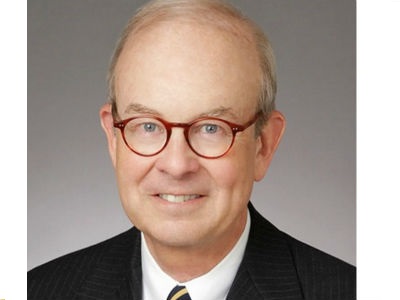Careful Fund Allocation Will Bridge Digital Divide
Federal monies should pave the most efficient path to universal broadband

The pandemic has created a new sense of urgency about closing America’s digital divide, elevating it from something that is desirable to something deemed essential. Not surprisingly, we’ve seen an outpouring of proposals for ways the government should assist, which vary greatly in the levels of recommended funding and the methods for allocating government dollars.
President Joe Biden recently agreed to a $1.2 trillion bipartisan infrastructure plan that includes $65 billion for building out broadband across the nation (a substantial reduction from his $100 billion proposal for broadband). Now, the package needs Republican support to pass the Senate.
Achieving universal broadband by equipping every American with the transformative power of digital tools, social networks and online platforms would be a milestone accomplishment, but simply appropriating funding does not guarantee success, and with a decreased amount of funding, expenditures must be judiciously planned. As lawmakers sift through a myriad of ideas on how the funds should be spent, ensuring the best use of taxpayer funds and carving the most efficient path toward universal connectivity should be top priorities.
Here are three guiding principles for allocation of federal dollars to close the digital divide.
Don’t miss the forest for the fiber: America’s broadband infrastructure investment should be based on technology-neutral criteria, allowing for a combination of solutions that are adapted to local needs and can be rapidly and cost-effectively deployed. With limited funds to tackle all three parts of the digital divide — deployment, affordability and adoption — ensuring the most efficient use of funds is critical. For deployment, while policymakers may reasonably favor the use of fiber optics where feasible, they should resist the urge to foreclose other next best solutions, especially in those hardest-to-serve areas where, even with government subsidies, it may be uneconomical to lay miles and miles of fiber to serve a single household.
To get infrastructure legislation passed, now’s the time to make practical funding allocation decisions to ensure that the gap between digital haves and have-nots can be closed with the federal dollars made available. Fiber costs $20,000 per mile, by some estimates, and connecting every home with fiber in rural, mountainous and sparsely populated locations would prove prohibitively expensive.
Simply appropriating funding does not guarantee success, and with a decreased amount of funding, expenditures must be judiciously planned.
In short, fiber should be deployed when reasonable, based on geography and population density. It may not make sense, for example, to bring fiber to Supai, Arizona, which can only be reached by foot, pack animal or helicopter. In some cases, subsidizing satellite internet services could prove more cost effective than reaching every end point with fiber.
Use market mechanisms to maximize broadband deployment: Federally funded broadband deployment should be structured in a market-sensitive way. Over the past decade, the Federal Communications Commission has developed a competitive funding allocation process, via reverse auctions, to ensure broadband projects produce the greatest benefit for the dollars expended. The auctions maximize efficiency as bidders compete against one another to offer the lowest price at which they are willing to provide their services.
It would make sense to hold a series of auctions, rather than a single auction, to benefit from lessons learned from previous bidding rounds. Additionally, holding multiple auctions would help ensure that unserved communities don’t fall through the cracks, in the event that there is no round-one bidder for certain areas.
The more bidders the merrier: In order to encourage a highly competitive market, all qualified, proven and capable bidders should be welcomed into the process. Strong guardrails should be put in place to ensure entities seeking to bid have the resources required to deliver on their promises. Once these standards are met, the more bidders the better.
No priority or favoritism should be given to any category of bidder based on for-profit or not-for-profit status. The goal is to get the job done, and it’s in Americans’ interest that the entities best suited to build and operate broadband networks be trusted with taxpayer dollars.
The digital divide has been a problem for the past quarter-century. Closing the gap is now a national priority, and bipartisan support for a solution has never been stronger. With the appropriation of federal dollars for broadband now likely, a well-considered allocation plan along these lines is the next essential step.
Rick Boucher was a Democratic member of the U.S. House from Virginia for 28 years and chaired the House Energy and Commerce Committee’s Subcommittee on Communications and the Internet. He is honorary chairman of the Internet Innovation Alliance (IIA).
Broadcasting & Cable Newsletter
The smarter way to stay on top of broadcasting and cable industry. Sign up below
